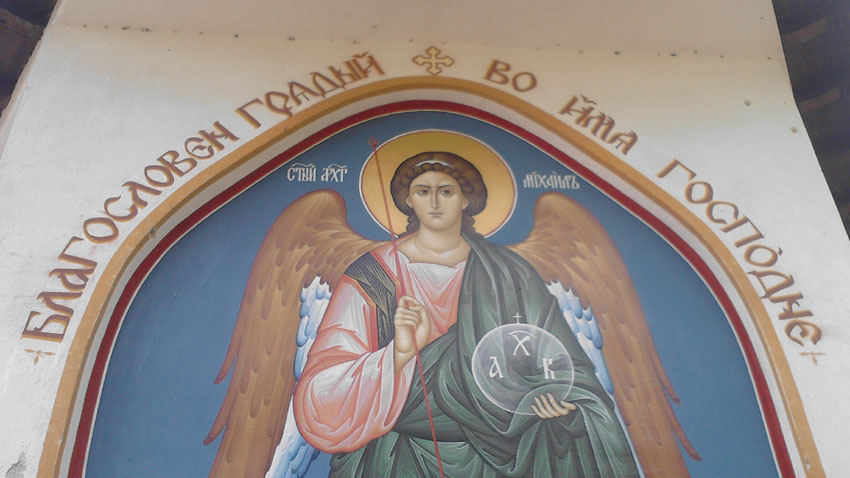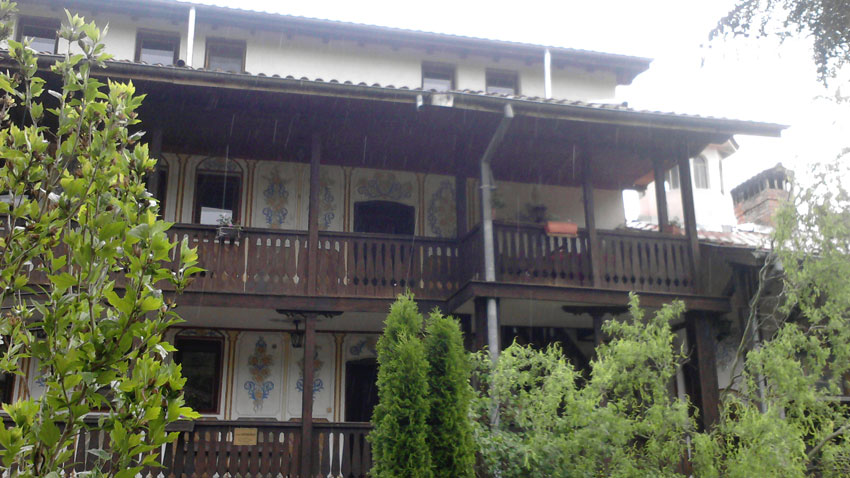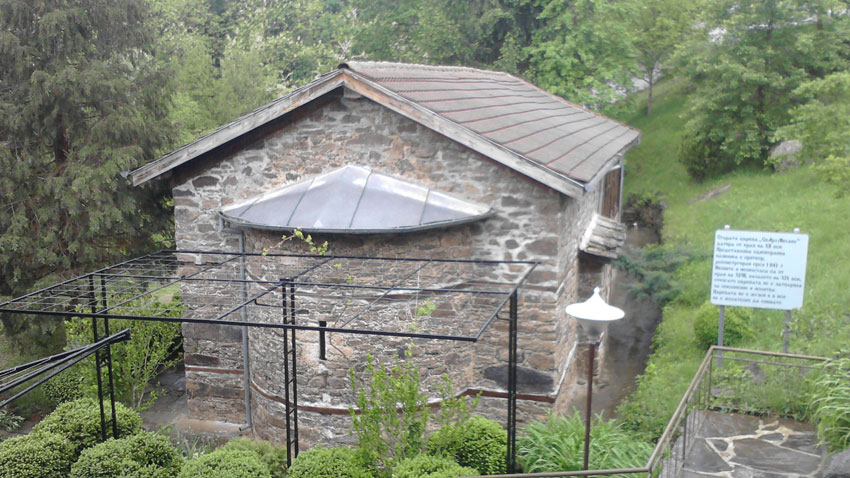The territory of Bulgaria is peppered with monasteries, some have been preserved to this day in all of their splendor, the ruins of others are the only reminder they even existed. Through the ages monasteries have been pillars, upholding the Bulgarian spirit, safe havens for revolutionaries, centres of faith and literature. Hidden away in out-of-the-way places, surrounded by beautiful landscapes, they attract multitudes of tourists. One such monastery which does not enjoy the popularity of the monasteries of Rila or Bachkovo, for example, is the St. Archangel Michael monastery of Chekotin, which is nonetheless a magnificent cloister. Huddled in the outer folds of the Balkan Range, the terraced building was erected above Maluk Iskar River. As abbot Mihail explains, the monastery was built at the close of the 12th and the beginning of the 13th century:
 “The earliest written evidence of its existence goes back to 1646 – it is mentioned in a psalm-book copied by Kalinik, probably from Varovitets monastery. What it says in this psalm-book is that the monastery of Chekotin has been reconstructed. Above the monastery there once was a fortress with thick walls, a rock church and vaults. The monastery and the fortress were destroyed by the Turks at the end of the 14th century. Later monks came from Mount Athos and rebuilt it. As monk Kalinik writes, the monastery was a hub of the Bulgarian spoken and written word. Books were copied, though not on a grand scale. In the 17th-18th century robbers marauded and destroyed the monastery, though not the church. At the end of the 18th and the beginning of the 19th century Bulgarians came in search of a retreat. They found the deserted remains of the monastery even though they were hidden from view. The church was buried under rocks and earth so as to conceal it. That was when it was rebuilt and the icons and iconostases were made.”
“The earliest written evidence of its existence goes back to 1646 – it is mentioned in a psalm-book copied by Kalinik, probably from Varovitets monastery. What it says in this psalm-book is that the monastery of Chekotin has been reconstructed. Above the monastery there once was a fortress with thick walls, a rock church and vaults. The monastery and the fortress were destroyed by the Turks at the end of the 14th century. Later monks came from Mount Athos and rebuilt it. As monk Kalinik writes, the monastery was a hub of the Bulgarian spoken and written word. Books were copied, though not on a grand scale. In the 17th-18th century robbers marauded and destroyed the monastery, though not the church. At the end of the 18th and the beginning of the 19th century Bulgarians came in search of a retreat. They found the deserted remains of the monastery even though they were hidden from view. The church was buried under rocks and earth so as to conceal it. That was when it was rebuilt and the icons and iconostases were made.”
Monasteries have always played the role of keepers of the Bulgarian spirit, of centres of culture and education. What has the role of the monastery of Chekotin been through the ages?
“Books were copied at the monastery, most of all church books. There were a great many volumes kept in storage here. After 1944 many of them were transferred to different museums. Unfortunately, in 1991 the old wing of the cloister burnt down, and together with it, a large part of its library. According to legend, many books were copied here because of its proximity to the Varovitets monastery of Etropole which was a literary centre.”

Monk Mihail says that the monastery of Chekotin was reconstructed as it now stands in 1991.The three storeyed building is reminiscent of the architecture of Bulgarian houses from the National Revival period. Visitors can take a rest on the spacious verandah and enjoy the view of the well-kept garden, take in the silence, broken only by the babble of the river or just take a break from the vanity of the world. The ornaments and flowers on the walls also seem to take us back to times long gone by. There is a spring of holy water (ayasmo) in the monastery yard, of which it is said that “Tsar Ivan Shishman (14th century) made it.” There used to be a plaque, but it has disappeared. The abbot explains: “Monasteries were put up in locations where there is water. In Greek ayasmos means blessing, i.e. where there is water there is life.” In the centre of the yard rises the St. Archangel Michael church, dating back to the 12th century.
“It is an ancient triconchal church with a narthex, made in 1841. According to legend the stone-wall atrium was built in the 15th century. Once, the church had a stone roof but it was difficult to keep in good repair. We recently restored the frescoes and the church which were in a bad state of disrepair.”

As to the painting of the icons, abbot Mihail says: “The icons are thought to have been painted at the beginning of the 19th century by Dimitar Zograf and Yoan Iconopisets (icon painter) from the Samokov school of icon-painting. The woodcarving is from the Tryavna school, again some time in the 19th century. There is an icon of St. Mina that is known to have been painted later by Hadji Ivancho from Gabrovo. It is said to work miracles.”
The monastery of Chekotin was declared an archaeological monument of culture in 1987. While looking for Thracian burial mounds in the vicinity, archaeologists Daniela Agre and the late Georgi Kitov came across the monastery and registered it at the National Institute for Monuments of Culture.
English version: Milena Daynova
Photos: Svetlana DimitrovaSince the beginning of the year, 10.7 million foreigners have visited Bulgaria, Rumen Draganov, director of the Institute for Analyses and Evaluations in Tourism, told BNR. This represents a 5% increase over last year. According to Rumen..
Over 3,200 participants and guests of different ages and nationalities filled the Summer Theater in Burgas for the opening of the 9th edition of the European Gymnastics Festival for people over fifty - Golden Age Gym Festival 2024 . The festival..
"Bulgaria - magnetic and beautiful" - under this title Bulgarian travel bloggers present some of the most photogenic places in this country. The exhibition with unique images taken by the travelers will be opened on September 24 at the entrance of the..
In 2009, a state-owned company in Shanghai launched a yogurt on the market under the brand name "Musiliyan, as the village of Momchilovtsi is called in..

+359 2 9336 661
